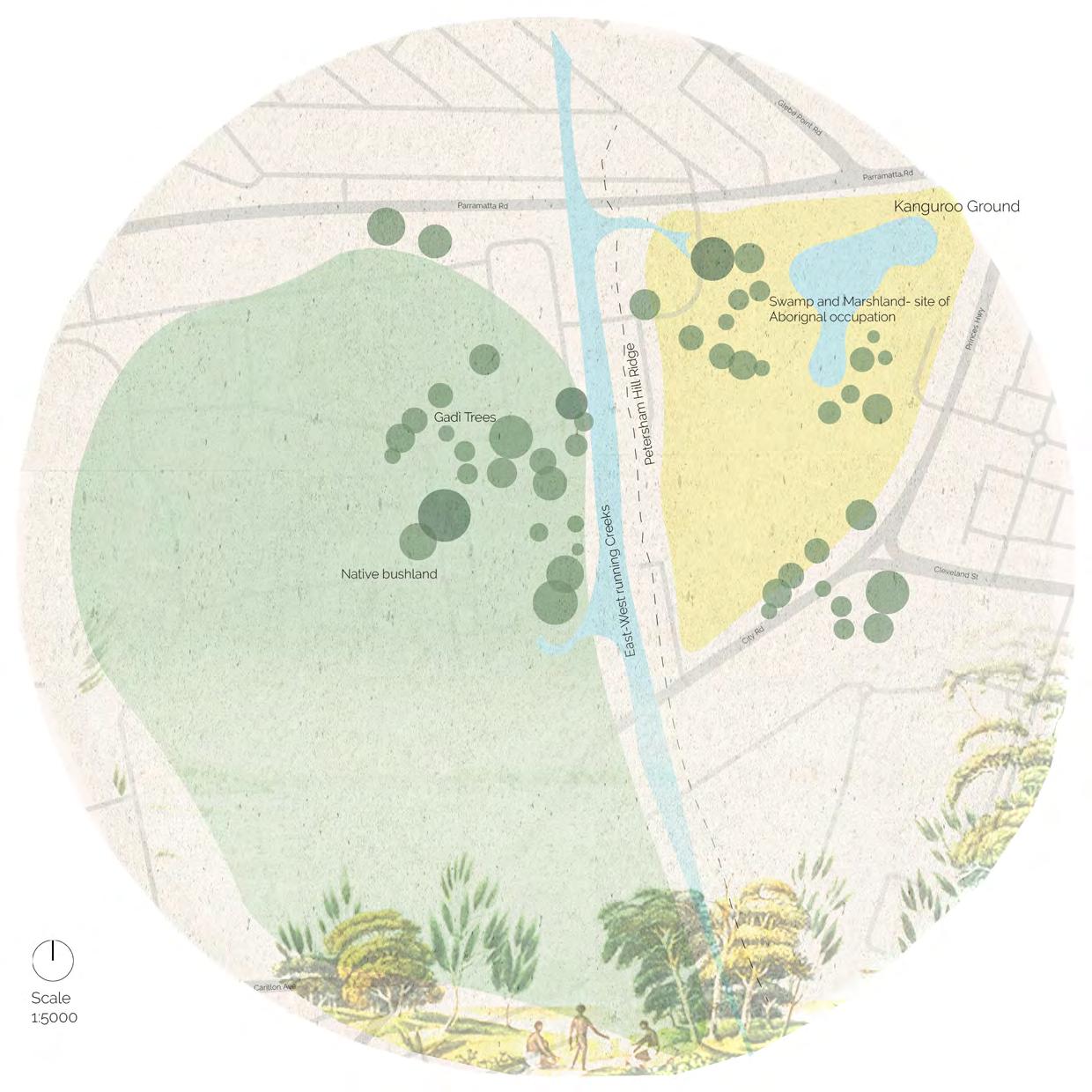
1 minute read
First Nations and Colonial History
from Weave + Thread
ANALYSIS - REFLECTION - ACTION
FIRST NATIONS + COLONIAL HISTORY: HISTORICAL ANALYSIS
Advertisement
The site of The University of Sydney, is built upon the land of the traditional owners, the Cadigal People. The freshwater source and swamps surrounding the university grounds, west and east of the Petersham Ridge (the site of The Great Hall), were sites of Aboriginal occupation. Across the site were many traditional ceremonial places of business and gathering. The corner of what we now know as City and Parramatta Roads, was a sit down spot for ‘womens business’. The area toward Missenden Road, was a known gathering space for Elders. The University is built on Wianamatta shales, a clay soil base used to make tools. This Country was a Turpentine Iron Bark Forest, providing nourishment to the First Nations People and an abundance of fauna. About eighteen months after colonisation of Sydney by European in 1788, part of this ‘Kanguroo Ground’ near the present day junction of Parramatta and City Roads was developed into sites for Crown, churches and school purposes, as well as pasturage of stock.
Eastern Avenue’s history has a curious colonial narrative of purpose-a route to move cadavers, a motorway and a parking lot. It was imagined as a parklike boulevard by the first Professor of Architecture, Leslie Wilkinson but most significantly, overtime the surrounding built environment has erased Aboriginal Culture, as outlined in the Wingara Mura Design Principles.
The richness and value of this living culture is of significance to our site and the design at hand.










